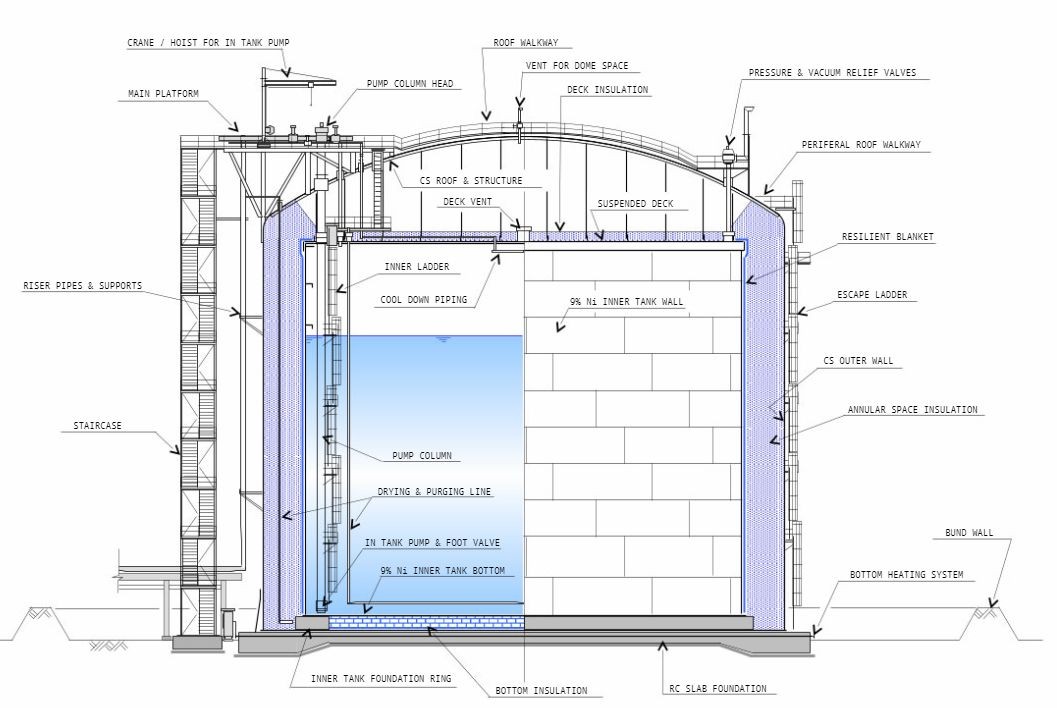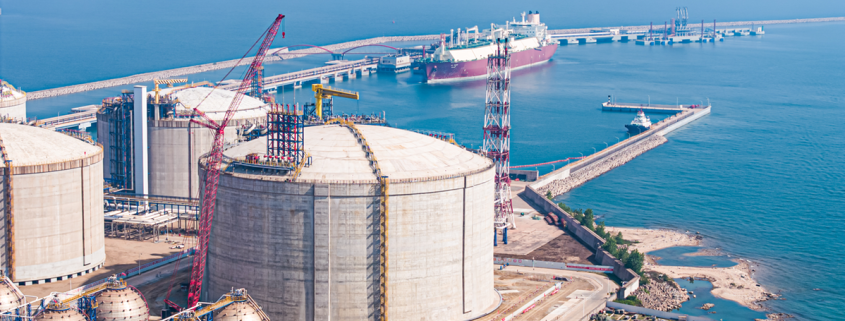In-Depth Guide to LNG Tank Design, Material Selection, and Applications
Introduction
Liquefied Natural Gas (LNG) is an essential component of the global energy infrastructure, stored at cryogenic temperatures to facilitate efficient transportation and storage. LNG tank design and material selection are critical to ensure their safety, durability, and performance. In addition to exploring tank design and materials, it’s essential to understand the various applications of LNG tanks to fully appreciate their role in the energy sector.
Understanding LNG Tank Design
LNG tanks are designed to hold natural gas in liquid form at temperatures around -162°C (-260°F). They must accommodate extreme cold, pressure variations, and potential thermal stresses. Here’s a detailed look at the primary tank types and critical design considerations:
Tank Types:
Single Containment Tanks: These tanks feature a single layer of steel with an outer concrete structure. Due to lower safety margins, they are typically used for smaller storage capacities and are less common for large-scale applications.
Double Containment Tanks: These tanks have an inner steel tank and an outer concrete or steel containment layer. They offer additional safety by managing potential leaks and providing an extra layer of protection.
Full Containment Tanks: These tanks, featuring an inner LNG container and a secondary containment system, are designed to handle any potential leaks, making them the standard for large-scale LNG storage.
Design Considerations:
Thermal Insulation: Advanced insulation materials like perlite, vacuum, or polyurethane foam prevent heat ingress and maintain the LNG at cryogenic temperatures.
Pressure Control Systems: Relief valves and monitoring systems are essential for managing internal pressures and ensuring safe operation.
Seismic and Structural Integrity: Tanks must withstand seismic activity and other structural stresses, so they often incorporate reinforced concrete and detailed structural analyses.

LNG Tank Design
Material Selection for LNG Tanks
Choosing suitable materials is crucial for the performance and longevity of LNG tanks. Here’s a look at the commonly used materials:
Inner Tank Materials:
9% Nickel Steel (ASTM A553): Ideal for the inner bottom plate and inner shell or wall plates, this material provides high toughness and resistance to brittle fracture at cryogenic temperatures.
Low-Temperature Carbon Steel: This is sometimes used with 9% nickel steel for components where extreme cryogenic properties are not as critical.
Outer Tank Materials:
Concrete: Used for the outer containment layer in double and full containment tanks, providing robust structural support and additional thermal insulation.
Steel: Sometimes used in the outer tank for high-stress areas, often coated or treated to resist corrosion.
Tank Roof Materials:
ASTM A516 Grade 70: This carbon steel is suitable for the tank roof plate, offering strength and toughness at lower temperatures.
Insulation Materials:
Perlite: Effective for insulating against cryogenic temperatures.
Glass Fiber and Aerogel: Advanced materials offering excellent thermal insulation but at higher costs.
Applications of LNG Tanks
LNG tanks play a critical role in various applications across the energy sector. Here’s how they are utilized:
LNG Import and Export Terminals:
Import Terminals: LNG tanks at import terminals receive LNG from ships and store it before it is regasified and distributed into the local gas network.
Export Terminals: LNG tanks store liquefied natural gas at export terminals before it is loaded onto ships for international transport.
LNG Storage and Distribution:
Utility Companies: Utilities store and distribute natural gas for residential and commercial use in LNG tanks, ensuring a steady supply even during peak demand periods.
Industrial Applications: Industries use LNG tanks to store and supply natural gas for processes that require a consistent and reliable fuel source.
LNG as a Fuel:
Marine Transportation: LNG tanks are used in ships designed to run on LNG, reducing emissions compared to traditional marine fuels.
Heavy-Duty Vehicles: LNG tanks are used in trucks and buses that operate on liquefied natural gas, offering a cleaner alternative to diesel fuel.
Emergency Backup and Peak Shaving:
Backup Power: LNG tanks provide backup power solutions for areas with unreliable electricity supply, ensuring that natural gas is available for power generation during outages.
Peak Shaving: LNG storage helps manage peak demand by storing excess gas during low-demand periods and releasing it during high-demand periods.
LNG Production Facilities:
Liquefaction Plants: LNG tanks store the liquefied product at production facilities, where natural gas is cooled and condensed into a liquid form for efficient storage and transport.
Design and Safety Considerations
To ensure the safety and efficiency of LNG tanks, consider the following:
Thermal Stress Management: Proper insulation and expansion joints are necessary to manage thermal stresses caused by extreme temperature variations.
Safety Features: To address potential risks associated with LNG storage, incorporate leak detection systems, fire protection, and emergency shutdown systems.
Regulatory Compliance: Adhere to industry standards and regulations from organizations such as the American Petroleum Institute (API), the National Fire Protection Association (NFPA), and the International Organization for Standardization (ISO).
Conclusion
LNG tanks’ design and material selection are fundamental to ensuring their safe and efficient operation. Engineers can create tanks that perform reliably under extreme conditions by selecting appropriate materials like 9% nickel steel for cryogenic components and ASTM A516 Grade 70 for the roof. Understanding LNG tanks’ diverse applications— from import and export terminals to industrial uses and emergency backup—highlights their crucial role in the global energy infrastructure. Careful design, material selection, and adherence to safety standards will support LNG storage and utilization’s continued success and safety. For precise specifications and current pricing, consulting with [email protected] is always advisable to meet specific project needs.




